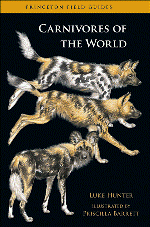Wild Tracks
On behalf of the world's wild species
Water Ecosystems – Saltwater
The saltwater, or marine ecosystem has a large salt composition compared to freshwater, and covers nearly half of the earth. This biome is divided into oceans, coral reefs and estuaries.
The marine biome supports more life forms than all other world habitats combined.
Oceans are huge bodies of saltwater divided into four zones containing a rich diversity of species:
The intertidal zone is the area where the ocean gathers at land. Because of tidal action, the flora and fauna are constantly changing.
The pelagic zone is the water area further out from land and is often cold.
The benthic zone is below the pelagic zone consisting of sand, silt and dead organisms at the bottom part where the temperatures decrease and where seaweed, bacteria, fungi, sponges, sea anemones, worms, sea stars and fishes are common.
The very bottom of the ocean is known as the abyssal zone and is very cold, is highly pressured, and is high in oxygen content but low in nutritional content.
Coral reefs are found in warm shallow waters and act as natural barriers along continents. This delicately balanced environment is one of the most biologically diverse marine ecosystems on earth, consisting of hard and soft corals, sponges, anemones, snails, rays, crabs, lobsters, turtles, dolphins and other sea life. Sea grasses provide food, nursery and habitat for many of these animals.
Unfortunately, many coral reefs throughout the world have been destroyed through anchor damage, touching by scuba divers, blasting for tourist development, dumping of waste (plastic bags in particular are attractive to turtles who mistake them for jellyfish and strangle on them) and sewage, over fishing, and harvesting for aquariums.
Estuaries are the area where fresh water from rivers or streams joins with the salt water of the oceans, and is nutrient-rich, supporting a rich ecosystem of aquatic plants, fungi, bacteria, protozoa, shellfish, crustaceans such as shrimp, crabs, etc., fish such as salmon, herring and trout, birds such as Great Blue Herons, sandpipers, ducks, kingfishers, cormorants and eagles, and even mammals such as bears, cougars, otters, seals, sea lions, mink and raccoons.
Mangroves are found in estuaries and support salt-tolerant trees with submerged roots that act as a nursery and breeding ground for birds and fish. Estuaries and mangroves have traditionally been treated as a nuisance, standing in the way of industrial and urban development and have been diked, dammed and filled in. Invasive species, poor water quality, excessive sedimentation, chemical pollution and logging have also contributed to degradation of this important ecosystem.
Marine Ecosystem References:
- Marine Biome
- Marine Biomes
- The Marine Biome
- What are Estuaries?
- What is a Coral Reef?
- Collapse of seals, Sea Lions and Sea Otters in North Pacific Triggered by Over fishing of Great Whales
- Bird Adaptation
- Bird Adaptations
- Seabird Adaptations
- Plankton: Doing More Than Just Drifting Through
- Fish Breathing
- Marine Mammals
- Animal Echolocation
- Diving Whales
- Ice Bridge Ruptures in Antarctic
- What About the Birds?
- What the deep-sea and cows have in common
- Ocean Acidification

Pingback: Group Assignment | Pearltrees